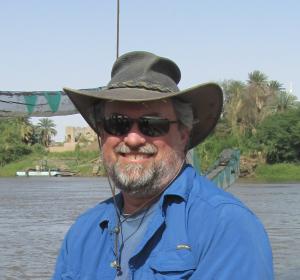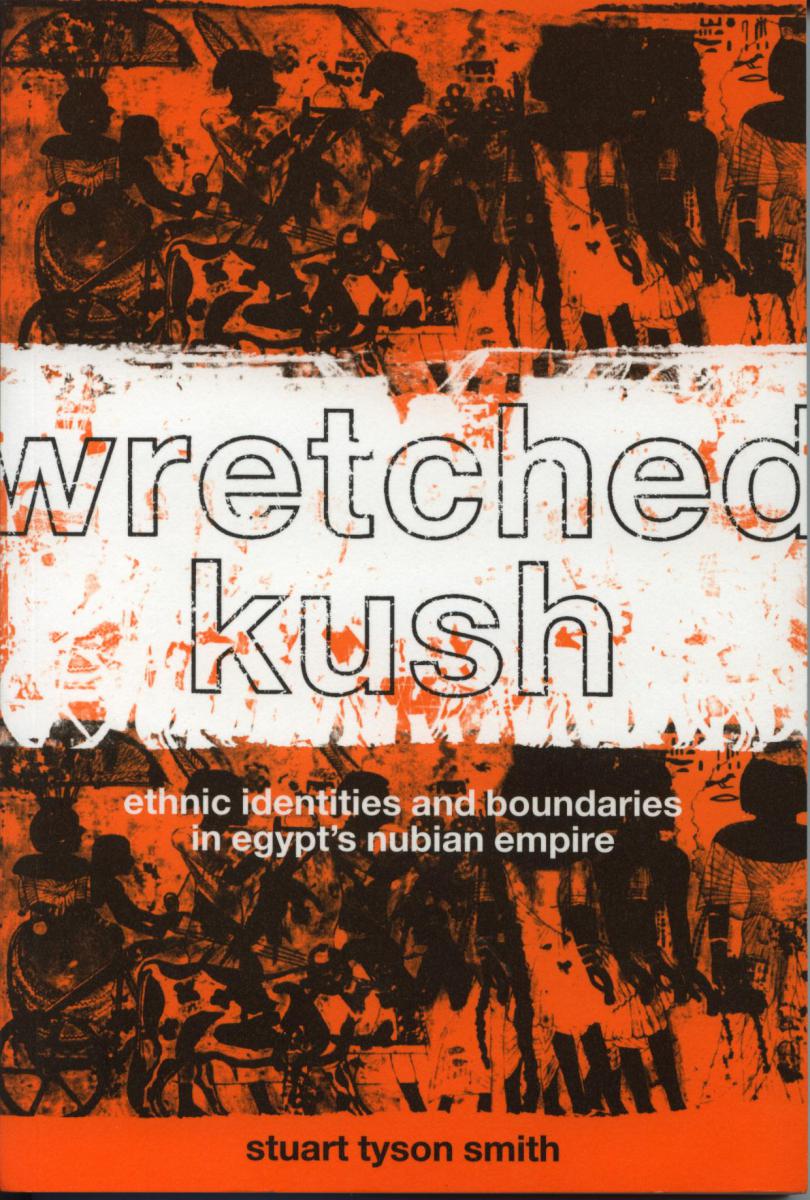
Contact Phone:
Office Location:
Website:
Specialization:
Archaeology (archaeology of Egypt and Nubia [the Sudan], ethnicity, culture contact and imperialism, entanglement, secondary state formation, ideology and legitimization, funerary practice, ceramics and residue analysis)
Education:
PhD, University of California, Los Angeles
MS Ed., University of Southern California
Bio:
Recent Invited Lectures
Inaugural Du Bois Virtual Lecture, 2020, "“Black Pharaohs?” Egyptological bias, racism, and Egypt and Nubia as African Civilizations", Hutchins Center, Harvard. View on YouTube: https://www.youtube.com/watch?v=4QK7P0Bdpj0&t=180s
British Museum, 2006 Kirwan Memorial Lecture. The Kirwan Memorial Lecture was inaugurated in 2000 in honor of the First President of the Sudan Archaeological Research Society, Sir Laurence Kirwan (1907-1999), whose interest and involvement in Sudanese archaeology spanned over 60 years. Speakers to date have included a number of senior scholars whose work has made significant contributions to Nubian archaeology.
Research:
Professor Smith’s research centers on the civilizations of ancient Egypt and Nubia. He is particularly interested in the identification of ethnicity in the archaeological record and the ethnic dynamics of colonial encounters. Ancient Egyptian colonialism, intercultural interaction and the origins of the Napatan state, whose rulers conquered Egypt, becoming Pharaohs of the 25th Dynasty, provide the focus of his current archaeological research. He has published on the dynamics of Egyptian imperialism and royal ideology, the use of sealings in administration, death and burial in ancient Egypt and Nubia, and the ethnic, social and economic dynamics of interaction between ancient Egypt and Nubia. Smith’s material specialization lies in ceramic analysis, including the chemical characterization of absorbed residues. He is also an active field archaeologist, having participated in and led archeological expeditions to Egypt, including the Luxor’s Theban Necropolis, and since 1997 to Sudanese Nubia, where he directs excavations at third cataract of the Nile in the New Kingdom and Napatan cemetery of Tombos (photo to right), along with co-director and UCSB alum Prof. Michele R. Buzon of Purdue University.
 In 1993, he took a break from the academic world and became the Egyptological Consultant on the hit MGM movie ‘Stargate,’ giving advice on the script, sets and costumes, and recreating spoken ancient Egyptian for about half the movie’s dialog. He renewed his Hollywood connection in 1998 by consulting on the script and reconstructing spoken ancient Egyptian for another hit movie, the recent Universal remake of ‘The Mummy,’ continuing this work in 2000 with the sequel ‘The Mummy Returns.’ Most recently, he returned to the Stargate franchise with MGM's 2018 web streaming production, Stargate Origins: Catherine (photo to left). You can find an interview from Egypt Revealed linked here.
In 1993, he took a break from the academic world and became the Egyptological Consultant on the hit MGM movie ‘Stargate,’ giving advice on the script, sets and costumes, and recreating spoken ancient Egyptian for about half the movie’s dialog. He renewed his Hollywood connection in 1998 by consulting on the script and reconstructing spoken ancient Egyptian for another hit movie, the recent Universal remake of ‘The Mummy,’ continuing this work in 2000 with the sequel ‘The Mummy Returns.’ Most recently, he returned to the Stargate franchise with MGM's 2018 web streaming production, Stargate Origins: Catherine (photo to left). You can find an interview from Egypt Revealed linked here.
Recent interviews/popular articles about this research:
Projects:
Fieldwork
UCSB-Purdue Tombos Project (2000-Present), Prof. Michele Buzon (Purdue) and Prof. Mohamed Faroug Ali (Africa International Univeristy, Khartoum), Co-Directors
UCSB-Leiden Abu Fatma Project (2015-Present), Prof. Sarah Schrader, Co-Director (Leiden)
UCSB-ASU Fourth Cataract Archaeological Expedition, a part of the Merowe Dam Archaeological Salvage Project (2003-2009)
UCLA Dongola Reach Survey (1996-1999)
Askut Publication Project (on the UCLA excavations of the late Alexander Badawy, which contributed to the Aswan High Dam Salvage Campaign in the early 1960’s, currently curated at the UCLA Fowler Museum of Cultural History)
K-12 Outreach
African Studies Association, Annual Meeting 2020, Led Teacher's Workshop on ancient Nubia
Participant in the UCSB Center for Middle East Studies Fulbright Hays Teacher Training Program (http://www.cmes.ucsb.edu/outreach.html)
Valley of the Kings, with Nancy Barnard. Oxford University Press, 2003. A book for young adults.
Some affiliations on campus
Center for Middle East Studies
Crossing Borderlands RFG
Slavery, Captivity, and the Meaning of Freedom RFG
African Studies RFG
Department of Religious Studies (0% affiliation)
Department of History (0% affiliation)
Publications:
Sample Publications

- Wretched Kush: Ethnic Identities and Boundaries in Egypt's Nubian Empire, Routlage London 2003
- Askut in Nubia: The Economics and Ideology of Egyptian Imperialism in the Second Millennium BC. Kegan Paul 1995
- “The Nubian Experience of Egyptian Domination During the New Kingdom,” in The Oxford Handbook of Ancient Nubia, edited by Geoff Emberling and Bruce Beyer Williams, 369-394. Oxford University Press, Oxford 2021. DOI: 10.1093/oxfordhb/9780190496272.013.20
- “Mighty Bull appearing in Napata: Memorialization and adaptation of the Bronze Age into the Iron Age world of the Kushite, 25th Dynasty of Egypt,” in An Excellent Fortress for his Armies, Festschrift James Hoffmeier, edited by R. Averbeck and K. L. Younger. Pennsylvania State University Press, College Station, 2020.
- “Colonial Entanglements: Imperial Dictate, Individual Action and Intercultural Interaction in Nubia,” in Archaeologies of Empire, edited by Ana Boozer, Bleda Düring, and Bradley Parker. SAR Press, Santa Fe, 2020.
- Erin Bornemann and Stuart Tyson Smith, “Liminal Deities in the Borderlands: Bes and Pataikos in Ancient Nubia,” in Demon Things: Ancient Egyptian Manifestations of Liminal Entities, Journal of Ancient Egyptian Interconnections 25:46-61.
- Katie Marie Whitmore, Michele R. Buzon, Stuart Tyson Smith, “Living on the Border: Health and Identity during the Colonial Egyptian New Kingdom Period in Nubia,” in The Bioarchaeology of Frontiers and Borderlands, edited by Cristina I. Tica and Debra L. Martin. University Press of Florida, Gainesville, 2019
- "Gift of the Nile? Climate Change, the Origins of Egyptian Civilization and its interactions within northeast Africa,” in Across the Mediterranean - Along the Nile. Studies in Egyptology, Nubiology and Late Antiquity dedicated to László Török on the Occasion of His 75th Birthday, edited by Tamás A. Bács, Ádám Bollók, and Tivadar Vida, pp. 139-159. Budapest, 2019.
- “Ethnicity: Constructions of Self and Other in Ancient Egypt,” Journal of Egyptian History 11 (2018):113-146.
- Stuart Tyson Smith and Michele R. Buzon, “The Fortified Settlement at Tombos and Egyptian Colonial Strategy in New Kingdom Nubia,” in From Microcosm to Macrocosm: Individual households and cities in Ancient Egypt and Nubia, edited by Julia Budka & Johannes Auenmüller, pp. 205-225. Sidestone Press, Leiden, 2018.
- Sarah A. Schrader, Stuart Tyson Smith, Sandra Olsen, and Michele Buzon, “Symbolic Equids: The Burial of a Third Intermediate Period Horse at Tombos and Kushite State Formation,” Antiquity 92 (2018): 383-397.
- “Colonial Gatherings: The Presentation of Inu in New Kingdom Egypt and the British Imperial Durbar, a Comparison,” in Gatherings: Past and Present. Proceedings from the 2013 Archaeology of Gatherings International Conference at IT, Sligo, Ireland, edited by Fiona Belgane, pp. 102-112. BAR International Series 2832. British Archaeological Reports, Oxford, 2017.
- Michele R. Buzon, Stuart Tyson Smith and Antonio Simonetti, "Entanglement and the Formation of Ancient Nubian Napatan State," American Anthropologist 118:2 (2016):284-300.
- "Hekanefer and the Lower Nubian Princes: Entanglement, Double Identity or Topos and Mimesis?" In Fuzzy Boundaries (Festschrift Loprieno), edited by Hans Amstutz, Andreas Dorn, Matthias Müller, Miriam Ronsdorf & Sami Uljas. Hamburg: Widmaier Verlag, 2015.
- "Identity." In The Oxford Handbook of Archaeological Theory Online. Andrew Gardner and Ulrike Sommer, eds., Oxford University Press, Oxford, 2014.
- "A potter’s wheelhead from Askut and the organization of the Egyptian ceramic industry in Nubia." Journal of The American Research Center in Egypt 50 (2014):103-121
- "Revenge of the Kushites: Assimilation and resistance in Egypt’s New Kingdom empire and Nubian ascendancy over Egypt." In Empires and Complexity: On the Crossroads of Archaeology, Gregory Areshian, ed., Cotsen Institute of Archaeology at UCLA, Los Angeles, 2013.
- "The Chamber of Secrets: Grottos, Caves, and the Underworld in Ancient Egyptian Religion." In Sacred Darkness: A Global Perspective on the Ritual Use of Caves, Holley Moyes, ed., University of Colorado Press, Boulder, Colorado, 2012.
- “A portion of life solidified: Understanding ancient Egypt through the integration of archaeology and history.” Journal of Egyptian History 3 (2010): 159-189.
- Julia Carrano, Jeffrey R. Ferguson, Gary H. Girty, Stuart T. Smith, “A Chemical Analysis of Ancient Nubian and Egyptian Style Ceramics: Evaluating the Substance of Style,” Mitteilungen des Archäologisches Instituts, Kairo 64 (2009):35-61.
- "Unwrapping The Mummy: Hollywood Fantasies, Egyptian Realities." In Box Office Archaeology, Julie M. Schablitsky, ed., Left Coast Press, 2007.
- State and Empire in the Middle and New Kingdoms. In Anthropology and Egyptology, Judy Lustig, ed., Sheffield, 1999.
- "Nubia and Egypt: Interaction, Acculturation, and Secondary State Formation from the Third to First Millennium BC." In Studies in Culture Contact, James Cusick, ed., Southern Illinois University, Center of Archaeological Investigations, 1998.



